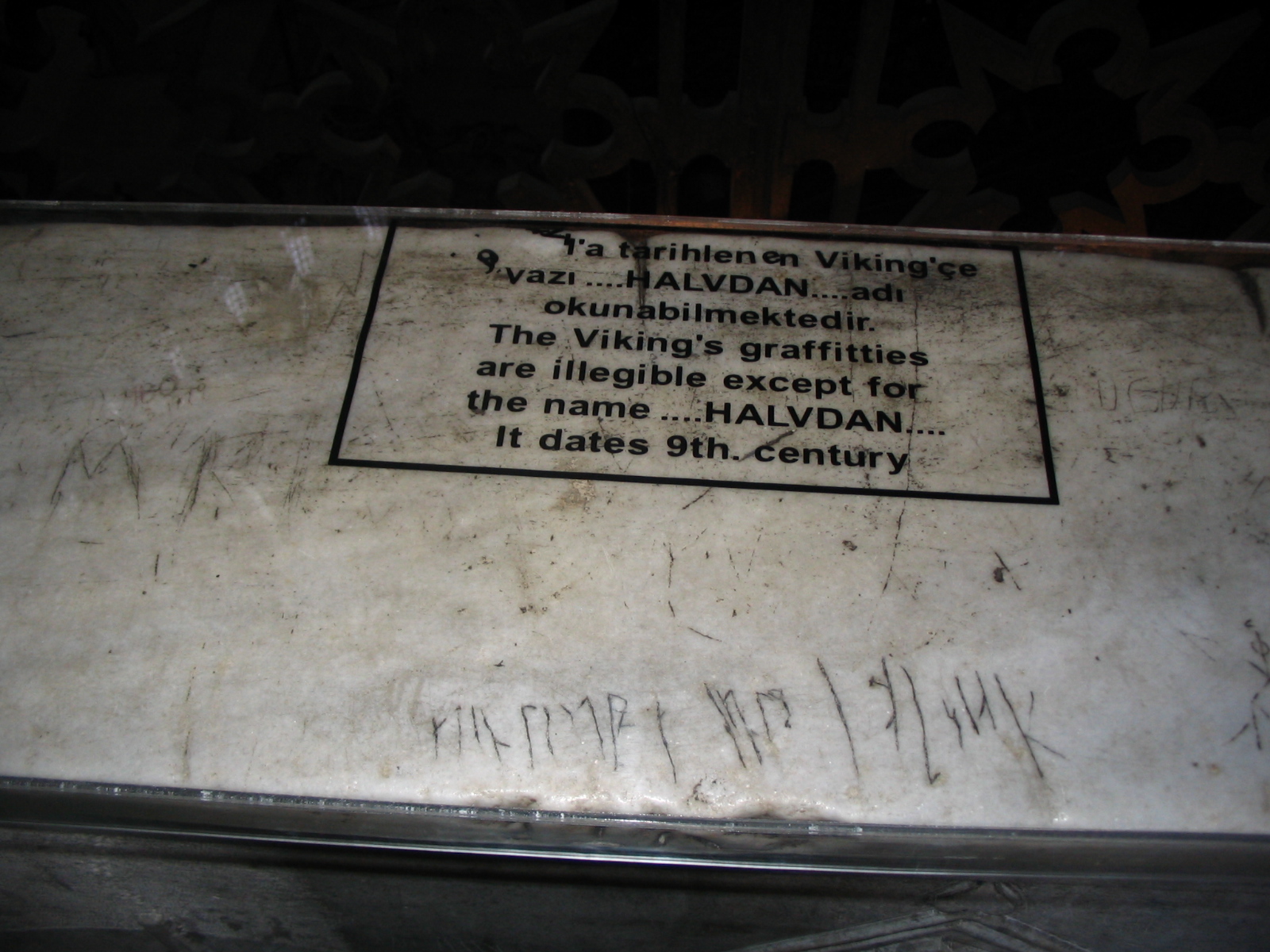Those who have been following me awhile, both here and on my tumblr blog, are well aware that I love the city of San Francisco, infamous for being very liberal and very very multicultural. (Also super smelly in many areas, but we'll ignore that for now.)
 |
| Oh I wanna be hoooo-oooome in my city... |
San Francisco has a special reputation, but a lot of it is shared by other big cities. Los Angeles and New York City here in the States come to mind, and of course you have London, Paris, etc.! Modern cities have this... this thing about them that I just love! I like being able to walk from Chinatown to Little Italy to get a cannoli to wash down my dim sum. I like being able to walk through a street with vendors selling colourful fabrics from India and Mexico. I like being able to say "Hey... you know what I haven't eaten in a while? Ethiopian food." and getting on a bus to go get some.
Big cities, at least in the west, seem to have become, over the years, increasingly multicultural. (Possibly elsewhere as well but having never been to Tokyo, Hong Kong, New Dehli, etc., I really could not say.) But how far does this phenomenon go back? To the 60s? To the Victorian era?
Try a thousand years.
I mentioned recently on twitter that the idea of multiculturalism being common in metropolitan areas is not at all a new one, name dropping Alexandria and Constantinople. Rome, too, was pretty mixed in its heyday. Here, have a map of Ancient Alexandria:
Big cities, at least in the west, seem to have become, over the years, increasingly multicultural. (Possibly elsewhere as well but having never been to Tokyo, Hong Kong, New Dehli, etc., I really could not say.) But how far does this phenomenon go back? To the 60s? To the Victorian era?
Try a thousand years.
I mentioned recently on twitter that the idea of multiculturalism being common in metropolitan areas is not at all a new one, name dropping Alexandria and Constantinople. Rome, too, was pretty mixed in its heyday. Here, have a map of Ancient Alexandria:
 |
| With a Jewish quarter, temples to Greek, Egyptian, AND Roman gods, and even Christian catacombs and churches, Alexandria was pretty well mixed. |
Alexandria, however, is not a city I have studied in great detail. You know which one I have studied a lot? Constantinople. (Though my focus is in Northern European archaeology, I am particularly interested in the presence of the Norse in Byzantine-era Constantinople, so... I have read so much about Constantinople, you guys.) So we're gonna talk about that one.
Ah, Constantinople. One of the very first cities to earn the somewhat-condescending moniker of "Where East Meets West." Though it was a primarily Christian city (to the point where one evidently couldn't walk two metres without getting a faceful of Jesus), there were Jews, Muslims, and Pagans in the city as well. And, incredibly, though the Byzantines certainly did try to push them to convert, they weren't persecuted for differing faiths.
And I bring up faith rather than race because race as a concept was rather different back then. People were far more likely to make assumptions based on religion, and the idea of racism as it exists in the modern era wasn't really a thing.
Still, it's time to examine some of the multiculturalism of the great Byzantine city. And I do mean great - Constantinople was the largest city in the medieval Christian world!
 |
| See that dot labeled Istanbul? That's where Constantinople was. "East meets West" indeed! |
PoC in Byzantine Constantinople
Now, what I can not give you are cold, hard statistics. Numbers and I are not friends, and besides, Constantinople was around for a thousand-ish years, and the numbers of Arabs and Africans and such probably fluctuated a great deal. That and, as I said, the concept of race was a hell of a lot different back then.
Still, we do know for a fact that people of colour were present in Constantinople. How do we know this? Because their art portrayed them!
Now, what I can not give you are cold, hard statistics. Numbers and I are not friends, and besides, Constantinople was around for a thousand-ish years, and the numbers of Arabs and Africans and such probably fluctuated a great deal. That and, as I said, the concept of race was a hell of a lot different back then.
Still, we do know for a fact that people of colour were present in Constantinople. How do we know this? Because their art portrayed them!
That, and Constantinople regularly kept contact with other great Christian cities (though after about 1000, they were no longer friends with Rome, so excluding that one). Countries such as Syria, Egypt, and Ethiopia had their own Christian traditions, and thus representatives from those countries were in Constantinople like all the time.
Jews in Byzantine Constantinople
Jews were kind of... a special case in the Eastern Roman Empire. They weren't Christian, obviously, but nor were they grouped together with heretics and pagans. They were somewhere between the two, and how this affected them varied. On one hand, Justinian passed a law that any Jew who owned a Christian slave could be executed, and that synagogues could be converted to Christian churches pretty much whenever the government felt like it. On the other hand, there's really only evidence of one synagogue being transformed into a church, and for the most part Byzantines just kind of... let them be.
.JPG) |
| The men in the right of this picture are meant to be Jewish rabbis. |
There were exceptions of course. Emperor Heraclius (610-641) tried pretty hard to force Jews to convert to Christianity. Following his death, and until 1204, the Jews suffered only three notable legal persecutions, the sum of whose span was roughly fifty years.It is even debated whether the first of these—the anti-Jewish measures passed during the reign of Leo III the Isaurian—could be considered a persecution. The second of these, during the reign of Basil I from 867 to 886, briefly punctuated the tolerance of the ninth century. The last of these persecutions took place under John Tzimiskes, who reigned from 969 to 976. (I've talked about him before. I... am not a fan of Tzimiskes.) Accordingly, there were no recorded legal persecutions of the Jews for nearly two and a half centuries following his reign.
And we do actually have numbers for this - in the 12th century, shortly before the Crusades fucked everything up for everyone, there were about 2,500 Jews living in Constantinople. It was in the 12th century that the passing Crusaders wrought havoc upon the Jewish communities of Byzantium, in a foretaste of what the later Latin occupation would bring upon the Byzantine Christians. Although most crusading bands did not adopt a policy of violence or forced conversion against the Jews, the First Crusade certainly undertook an anti-Jewish face in certain communities. Because the Crusade was undertaken with the goal of "subjugating all non-believers to the faith," many crusaders compelled Jews to convert on pain of death, and there is a large number of recorded cases of mass suicides within Jewish communities—particularly among young, virginal Jewish girls—in order to avoid such conversions.
The Norse in Byzantine Constantinople
Ah, yes, my absolute favourite topic. This one is actually pretty interesting, because at first, the Vikings being what they were, the only contacts between the Norse Vikings and the Byzantines was the two fighting.
 |
| The Vikings got around |
And then, sometime between the ninth and tenth centuries, the Norse seem to have figured "Hey. If you can't beat 'em, join 'em!" Norse traders already had a great relationship with Constantinople - or as they called it, "Miklagard". Byzantine silk was highly prized all over Europe, and Scandinavia was no exception. So it was only a matter of time before some Norsemen decided to just move there.
As early as 911, the Norse - referred to as Varangians by the Byzantines and also by me from here on out - are mentioned as fighting as mercenaries for the Byzantines. And generals took notice. These men were from a warrior culture. They fought well. They fought honourably.
And soon, Emperor Basil II took notice too. Emperor Basil II had seen both his father and his stepfather murdered by way of palace conspiracy. He had no reason to trust his native Greek guardsmen. So he got rid of them and instead gathered a force of Varangians to be his own bodyguard unit. As for the Varangians themselves, Norse culture had oaths as a big deal - oath-breakers went to the same afterlife as murderers - and so swearing an oath to protect Basil II was no small thing. They would - and often did - die for him. In return, Basil and subsequent emperors turned the other cheek as the Norse practised their "heathen" faith. (Though a lot of the Varangians did convert to Christianity.)
As early as 911, the Norse - referred to as Varangians by the Byzantines and also by me from here on out - are mentioned as fighting as mercenaries for the Byzantines. And generals took notice. These men were from a warrior culture. They fought well. They fought honourably.
And soon, Emperor Basil II took notice too. Emperor Basil II had seen both his father and his stepfather murdered by way of palace conspiracy. He had no reason to trust his native Greek guardsmen. So he got rid of them and instead gathered a force of Varangians to be his own bodyguard unit. As for the Varangians themselves, Norse culture had oaths as a big deal - oath-breakers went to the same afterlife as murderers - and so swearing an oath to protect Basil II was no small thing. They would - and often did - die for him. In return, Basil and subsequent emperors turned the other cheek as the Norse practised their "heathen" faith. (Though a lot of the Varangians did convert to Christianity.)
 |
| A contemporary depiction of the Varangian Guard - they're all the dudes in the back with their axes and round, Viking shields. |
Of course, not everyone was pleased. Sour Greek soldiers often called them "the emperor's axe-wielding barbarians". Contemporary Byzantine chroniclers note with a mix of terror and fascination that the "Scandinavians were frightening both in appearance and in equipment, they attacked with reckless rage and neither cared about losing blood nor their wounds". Still, no one could deny they were loyal.
Oh, and because I fucking love the Varangians, here's some more evidence of their presence:
Oh, and because I fucking love the Varangians, here's some more evidence of their presence:





No comments:
Post a Comment